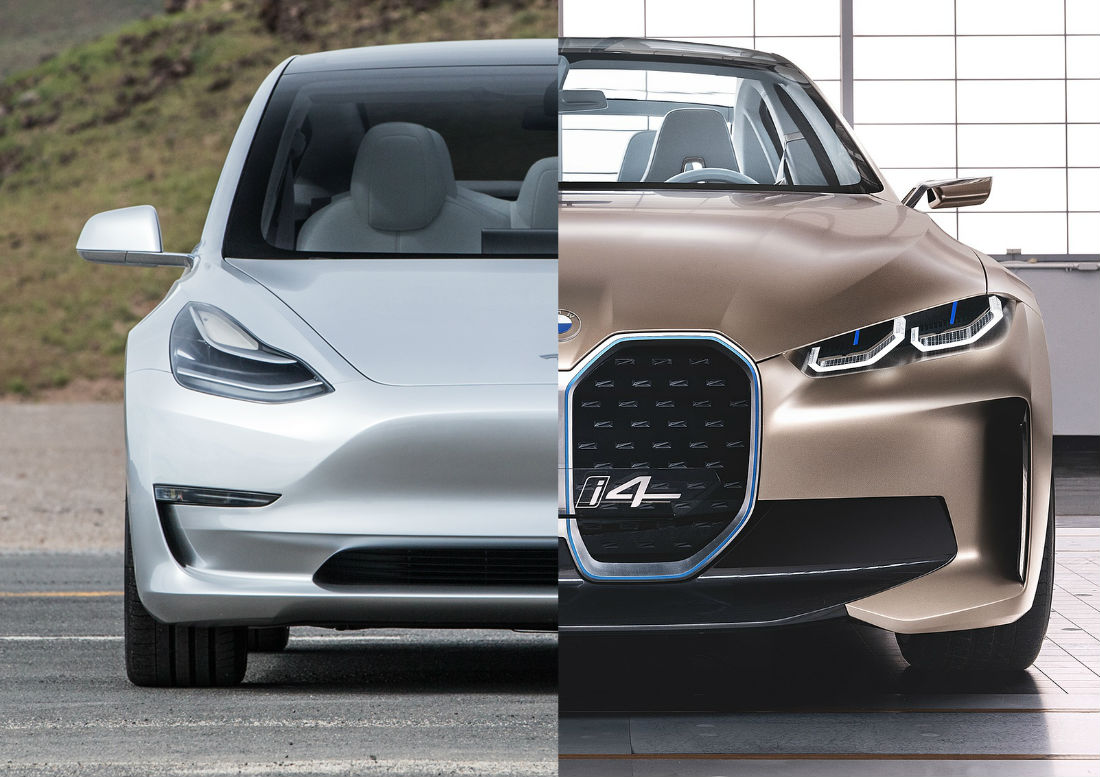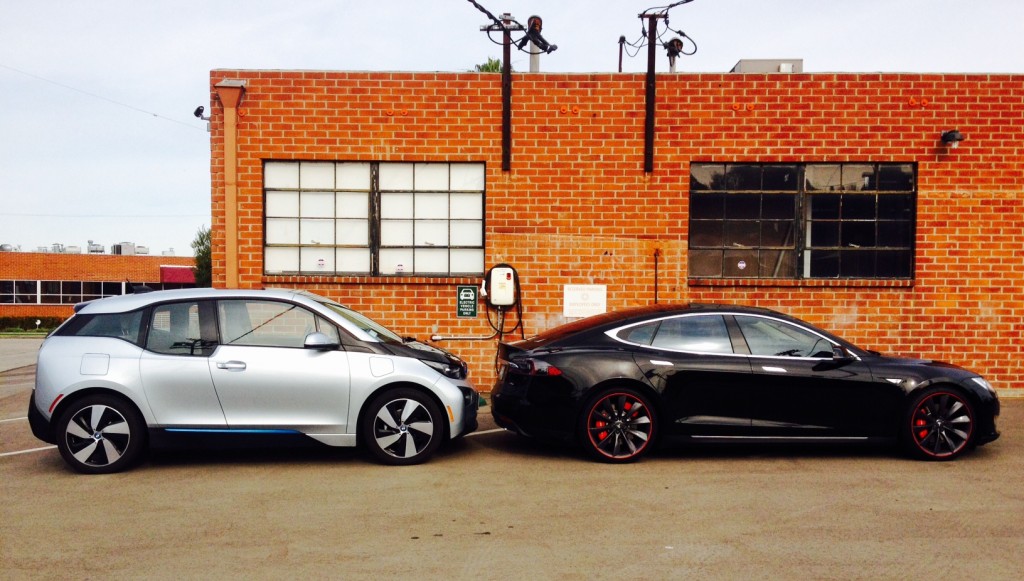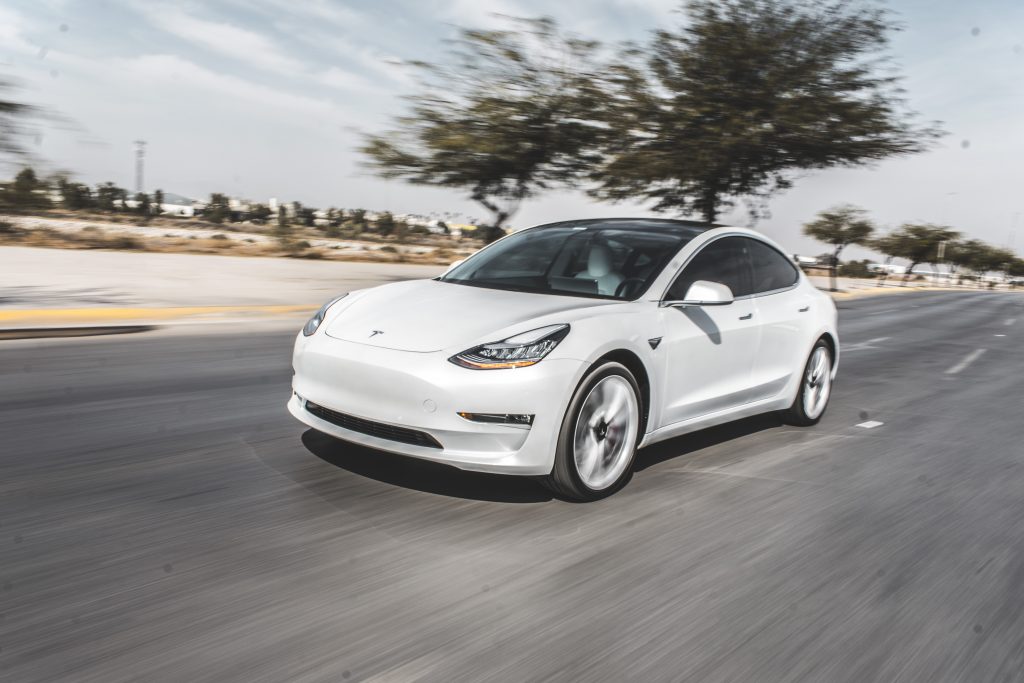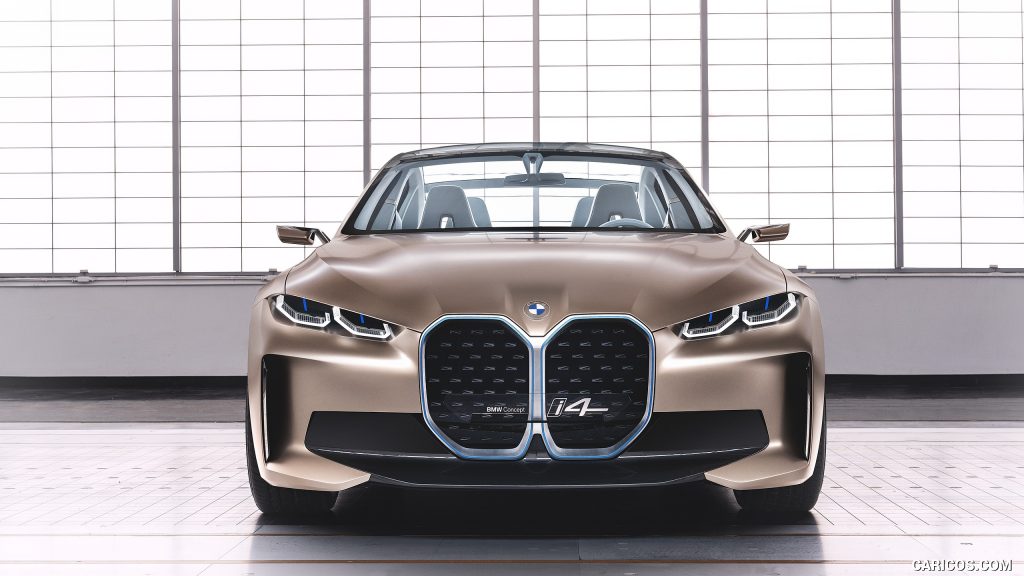

News
Tesla Model 3 vs BMW i4: How hubris is killing a potential ‘Tesla Killer’
Recently, BMW took the wraps off yet another one of its concept electric vehicles, the i4 sedan. The BMW i4 is poised to rival the Tesla Model 3, an electric car that is so disruptive, it is shaking up the midsize high-performance sedan market. Unfortunately for the German carmaker, one has to wonder if BMW’s efforts with the i4 are simply far too late.
Behind the possible clash between the Tesla Model 3 and the BMW i4 is a history that spans years, all the way back to 2013, when Tesla was just starting the production of its flagship Model S and the German automaker was coming up with the i3. But despite the two vehicles being all-electric cars, they could not be any more different.
Tesla designed the Model S as a sedan that can take on the Mercedes-Benz S-Class, and it has the looks, range, and performance to match. BMW, on the other hand, designed the i3 like a novelty vehicle, with a carbon fiber body, limited range, and performance that’s at home in inner-city streets. This distinction between the Model S and i3 foreshadowed the future of the two companies’ electric vehicle programs, as Tesla would follow up on the Model S with the Model X and Model 3, and BMW would end up being stuck with the i3 until today.

Yet despite having just one key pure electric car in its lineup, BMW has put a lot of effort in convincing the auto industry that it is taking electric vehicles seriously. Concept after concept was unveiled to much fanfare, but so far, none of the company’s fancy vehicles like the iNext have a legitimate release date. While this was happening, Tesla was growing, refining its processes, and making its vehicles like the Model 3 even better.
The Model 3 may not be the quickest vehicle in Tesla’s lineup, but it is the most disruptive. Priced aggressively and designed to take on the most established premium midsized sedans like the BMW 3-Series and the Mercedes-Benz C-Class, the Model 3 was poised to make waves, and make waves it did. The Model 3 Performance, the most powerful of the lineup, even managed to beat the legendary BMW M3 on the track, hands down. The idea of an electric sedan outperforming the M3 on the track would have probably warranted mockery had it been suggested during the days of the Model S and i3, but it is a painful truth that the German automaker has to swallow now.
It was not long before it was evident that the i3 won’t be enough to take on vehicles like the Model S or Model 3. Yet, BMW seemed to still take its sweet time developing its electric cars, with some executives even adopting the narrative that there is not enough demand for pure EVs anyway. It is then unsurprising that today, Tesla’s lead in electric mobility has become so stark, it is almost embarrassing for some legacy automakers like BMW.

When BMW announced the unveiling of its i4 concept on Twitter, the electric vehicle community immediately poked fun at the automaker for showing off yet another concept car. The car had impressive specs, though, with BMW stating that the i4’s single motor will generate about 530 hp, about on par with one of the automaker’s V8 engines. The i4 is pretty quick too, with a 0-62 mph time of about 4 seconds. Range-wise, estimates point to the i4 having about 270 miles in between charges.
While these specs are decent and a notable improvement over the i3, the i4 does show several signs suggesting that BMW is still not going all-in on electric cars. A look at the vehicle’s exterior alone shows that the i4 is still designed like a conventional car, with a long sloping hood that lacks any sort of frunk due to the space being allotted for electronics. Overall, the i4 boasts an attractive design that would likely end up being a template for the next-generation BMW 3-Series, but a ground-up EV it does not seem to be.
And here lies the issue with BMW so far. It appears that even after years of the i3 never really taking off, the company is still under the impression that it can ride the EV wave with a car that is just adequate in features and performance. Considering BMW’s long history as an automaker, such appears to be a big sign of hubris. And at this point in the EV race, that could be very costly.

BMW is one of three prolific auto houses in Germany, and so far, it is the one that seems to be lagging behind the most when it comes to electric vehicles. Daimler may be seeing challenges with the Mercedes-Benz EQC, but the company has some fallback in the company’s electric trucks like the Freightliner eCascadia, which only has a few rivals like the Tesla Semi.
Volkswagen has adopted a very aggressive strategy with its EV push. So serious is VW with its electric cars that the company’s CEO, Herbert Diess, is pretty much putting his career on the line to ensure that the automaker can roll out a mass-produced vehicle like the ID.3, a car that has the potential to be this generation’s Beetle. And then there’s BMW, still with its concepts, and a Model 3 competitor that is still over a year away at the best case scenario.
The term “Tesla Killer” has become ubiquitous with the number of electric cars that are being developed by legacy automakers. Yet over the years, each and every one of these alleged killers, from the Chevy Bolt to the Jaguar I-PACE, have proven to be incapable of outgunning Tesla’s electric cars in their own game. For the i4 to be a legitimate rival to the Model 3, it must beat Tesla with not just its badge’s pedigree. Otherwise, BMW may end up killing its “Tesla Killer” even before it had a chance to compete, thanks to an EV effort that is uninspired at best.

News
Tesla FSD fleet is nearing 7 billion total miles, including 2.5 billion city miles
As can be seen on Tesla’s official FSD webpage, vehicles equipped with the system have now navigated over 6.99 billion miles.

Tesla’s Full Self-Driving (Supervised) fleet is closing in on almost 7 billion total miles driven, as per data posted by the company on its official FSD webpage.
These figures hint at the massive scale of data fueling Tesla’s rapid FSD improvements, which have been quite notable as of late.
FSD mileage milestones
As can be seen on Tesla’s official FSD webpage, vehicles equipped with the system have now navigated over 6.99 billion miles. Tesla owner and avid FSD tester Whole Mars Catalog also shared a screenshot indicating that from the nearly 7 billion miles traveled by the FSD fleet, more than 2.5 billion miles were driven inside cities.
City miles are particularly valuable for complex urban scenarios like unprotected turns, pedestrian interactions, and traffic lights. This is also the difference-maker for FSD, as only complex solutions, such as Waymo’s self-driving taxis, operate similarly on inner-city streets. And even then, incidents such as the San Francisco blackouts have proven challenging for sensor-rich vehicles like Waymos.
Tesla’s data edge
Tesla has a number of advantages in the autonomous vehicle sector, one of which is the size of its fleet and the number of vehicles training FSD on real-world roads. Tesla’s nearly 7 billion FSD miles then allow the company to roll out updates that make its vehicles behave like they are being driven by experienced drivers, even if they are operating on their own.
So notable are Tesla’s improvements to FSD that NVIDIA Director of Robotics Jim Fan, after experiencing FSD v14, noted that the system is the first AI that passes what he described as a “Physical Turing Test.”
“Despite knowing exactly how robot learning works, I still find it magical watching the steering wheel turn by itself. First it feels surreal, next it becomes routine. Then, like the smartphone, taking it away actively hurts. This is how humanity gets rewired and glued to god-like technologies,” Fan wrote in a post on X.
News
Tesla starts showing how FSD will change lives in Europe
Local officials tested the system on narrow country roads and were impressed by FSD’s smooth, human-like driving, with some calling the service a game-changer for everyday life in areas that are far from urban centers.

Tesla has launched Europe’s first public shuttle service using Full Self-Driving (Supervised) in the rural Eifelkreis Bitburg-Prüm region of Germany, demonstrating how the technology can restore independence and mobility for people who struggle with limited transport options.
Local officials tested the system on narrow country roads and were impressed by FSD’s smooth, human-like driving, with some calling the service a game-changer for everyday life in areas that are far from urban centers.
Officials see real impact on rural residents
Arzfeld Mayor Johannes Kuhl and District Administrator Andreas Kruppert personally tested the Tesla shuttle service. This allowed them to see just how well FSD navigated winding lanes and rural roads confidently. Kruppert said, “Autonomous driving sounds like science fiction to many, but we simply see here that it works totally well in rural regions too.” Kuhl, for his part, also noted that FSD “feels like a very experienced driver.”
The pilot complements the area’s “Citizen Bus” program, which provides on-demand rides for elderly residents who can no longer drive themselves. Tesla Europe shared a video of a demonstration of the service, highlighting how FSD gives people their freedom back, even in places where public transport is not as prevalent.
What the Ministry for Economic Affairs and Transport says
Rhineland-Palatinate’s Minister Daniela Schmitt supported the project, praising the collaboration that made this “first of its kind in Europe” possible. As per the ministry, the rural rollout for the service shows FSD’s potential beyond major cities, and it delivers tangible benefits like grocery runs, doctor visits, and social connections for isolated residents.
“Reliable and flexible mobility is especially vital in rural areas. With the launch of a shuttle service using self-driving vehicles (FSD supervised) by Tesla in the Eifelkreis Bitburg-Prüm, an innovative pilot project is now getting underway that complements local community bus services. It is the first project of its kind in Europe.
“The result is a real gain for rural mobility: greater accessibility, more flexibility and tangible benefits for everyday life. A strong signal for innovation, cooperation and future-oriented mobility beyond urban centers,” the ministry wrote in a LinkedIn post.
News
Tesla China quietly posts Robotaxi-related job listing
Tesla China is currently seeking a Low Voltage Electrical Engineer to work on circuit board design for the company’s autonomous vehicles.

Tesla has posted a new job listing in Shanghai explicitly tied to its Robotaxi program, fueling speculation that the company is preparing to launch its dedicated autonomous ride-hailing service in China.
As noted in the listing, Tesla China is currently seeking a Low Voltage Electrical Engineer to work on circuit board design for the company’s autonomous vehicles.
Robotaxi-specific role
The listing, which was shared on social media platform X by industry watcher @tslaming, suggested that Tesla China is looking to fill the role urgently. The job listing itself specifically mentions that the person hired for the role will be working on the Low Voltage Hardware team, which would design the circuit boards that would serve as the nervous system of the Robotaxi.
Key tasks for the role, as indicated in the job listing, include collaboration with PCB layout, firmware, mechanical, program management, and validation teams, among other responsibilities. The role is based in Shanghai.
China Robotaxi launch
China represents a massive potential market for robotaxis, with its dense urban centers and supportive policies in select cities. Tesla has limited permission to roll out FSD in the country, though despite this, its vehicles have been hailed as among the best in the market when it comes to autonomous features. So far, at least, it appears that China supports Tesla’s FSD and Robotaxi rollout.
This was hinted at in November, when Tesla brought the Cybercab to the 8th China International Import Expo (CIIE) in Shanghai, marking the first time that the autonomous two-seater was brought to the Asia-Pacific region. The vehicle, despite not having a release date in China, received a significant amount of interest among the event’s attendees.








